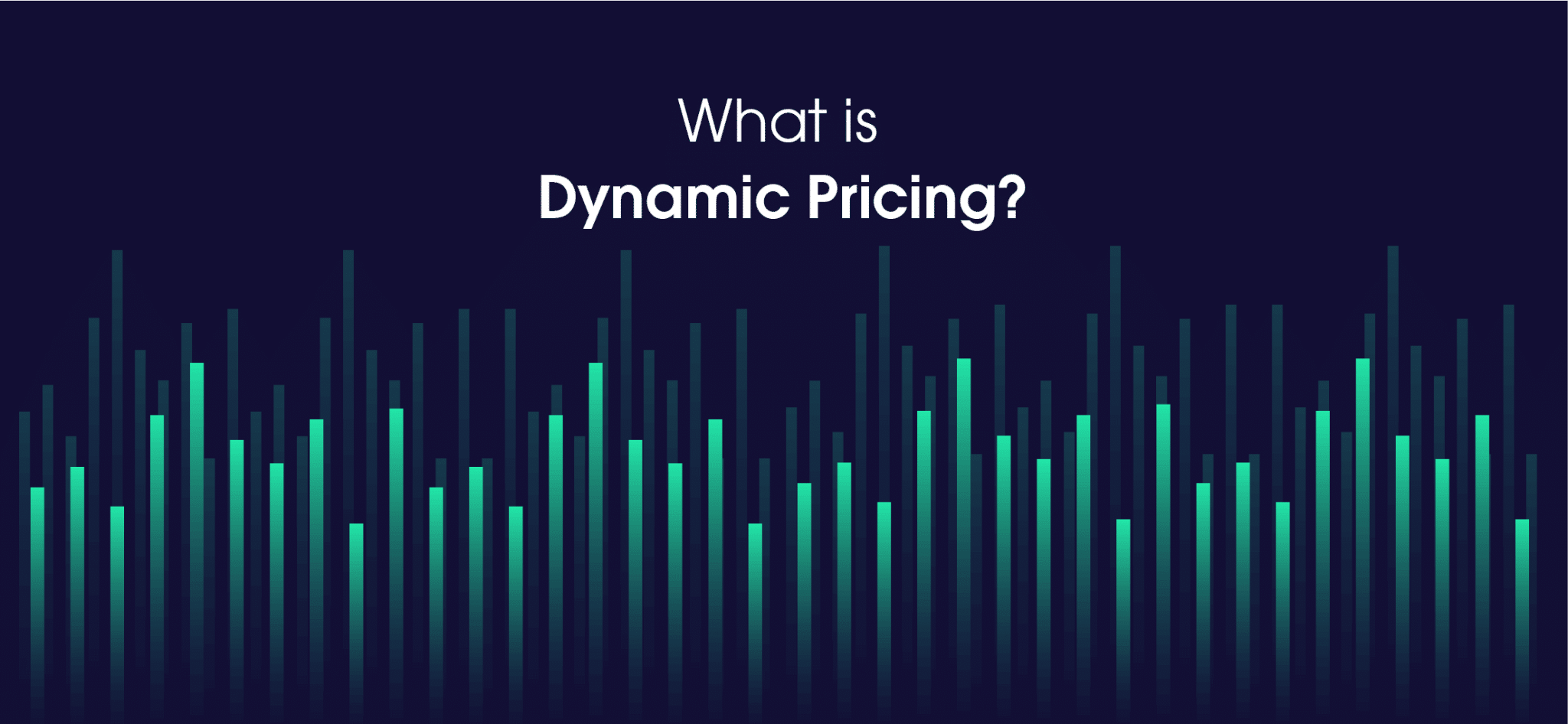Dynamic pricing is one of the most fascinating subjects that has swept the eCommerce industry. It is not an entirely novel or obscure idea for businesses. However, its growth is more closely linked to modern e-commerce trends. Having that in mind, here are a few items and examples that’ll help give you a better grasp of this dynamic pricing strategy/ algorithm.
What is Dynamic Pricing?
Dynamic pricing is also known as demand pricing, surge pricing, or time-based pricing. This is a pricing technique in which companies can set variable prices based on consumer demand. To put it another way, this is a technique in which you constantly adjust commodity prices. Depending on the economy, it may be a matter of minutes, hours, or days.
If we look a little further back in time, we can see that the problems have piqued the interest of businesses. How many people need that particular product? How much product do you have on hand? Do you have many rivals? How many different types of products are there? Nowadays, real-time pricing makes use of more sophisticated data and methods to speed up the process.
Benefits of Dynamic Pricing
Pricing shifts have been one of the most critical methods to deal with in today’s eCommerce for a variety of reasons. One of them is making faster and more efficient distribution shifts.
As a result, the company will be more tolerant of market trends and will be able to operate with greater versatility. For example, if an item is overstocked, the required reduction can be accomplished by providing discounts.
Of course, price management allows you to monitor and change your prices in relation to your rivals. Another advantage is getting a greater understanding of market trends. You will be able to learn useful information. Which products are the most popular? What competitors, and at what cost?
Find out more about premium pricing here.
What kinds of Dynamic Pricing Strategies are there?
A dynamic pricing strategy can take many forms. Each of them achieves a particular set of objectives.
#1. Pricing segmentation:
This technique provides different rates to different consumers. That is, you divide the customers into groups. High-value consumers, for example, may be given higher rates. We may presume that they would prioritize service speed and quality over price.
#2. Time-based pricing:
Businesses may use this commodity pricing approach to charge more for delivering quicker services. This means you’ll have to pay extra if you want same-day delivery or if you arrive at the company near the end of the working day.
#3. Changing market conditions:
As you are aware, the market situation will change due to a variety of factors. Businesses, on the other hand, must behave accordingly. If revenues begin to decline for some cause, the company will pursue a price-cutting strategy.
#4. Peak pricing:
Many companies may use this technique to charge more during peak hours.
#5. Penetration pricing:
A company uses this technique when it wants to hit a significant portion of the market. As a result, potential buyers become acquainted with the offered commodity. To do so, businesses set prices that are lower than the market price and gradually raise them.
Do you think this Dynamic Pricing Strategy will work for you?
You can do a few things to make this product pricing approach work for you. The first step is to be open and honest with your customers about your dynamic pricing strategy. Customers must always be told about the factors that influence the price. Another effective method of applying this technique will be to motivate some of the customer’s conduct. Dynamic Peak pricing, for example, aids in increasing earnings during peak hours.
Some of the world’s biggest digital retailers, such as Amazon, have introduced competitive pricing and reaped significant benefits. However, some companies use this technique on a regular basis and with great success. Perhaps the most illustrative example of this dynamic pricing will be airfare pricing.
What causes the price of airfare to fluctuate too much?
To begin with, airlines are conscious of the various types of passengers. They can be classified into two categories: leisure and business travelers. They both require this service, but their actions are very different. Dates are (generally) more versatile for leisure travelers (meaning that they tend to plan their trips). Business travelers must fly on a specific day and, in many cases, at a specific time.
This ensures that leisure travelers choose to book their tickets ahead of time. Business travelers always make last-minute reservations, and they are willing to pay more. As a result, as the departure date approaches, the only seats available are the more expensive ones. In addition, there are also times of the year when demand is still higher – for example, holidays. Airfare rates can also differ depending on the day or the airline.
How does the Dynamic Pricing Algorithm Function?
Advanced pricing algorithms typically use a combination of AI and ML technology. In comparison to conventional pricing, the dynamic approach means that pricing decisions can be scaled. As a result, algorithmic pricing allows retailers to move from SKU-centric to portfolio-level pricing. This takes into account all types of explicit and implicit dependencies.
Dynamic pricing algorithms often provide retailers with versatility by allowing them to set prices based on various groups of customers. The latter is accomplished by developing an optimum value proposition based on industry dynamics, fluctuating demand, consumer behavior, buying power, and a variety of other variables.
When it comes to dynamic pricing algorithms, the dependence between price and demand is a key estimation. The vast majority of pricing algorithms rely on historical sales data to estimate the demand function. A typical pricing algorithm’s workflow consists of four major stages:
- The engine consumes historical data on price points and demand for specific goods in order to process it using the dynamic pricing algorithm.
- The demand function uses specified dependencies.
- To achieve optimal prices, cutting-edge math considers hundreds of pricing and non-pricing variables.
- Following the application of the suggested rates, the algorithm repeats the loop, taking into account the most recent repricing results.
However, developing a forecasting model is a dynamic process that may vary in each case. This is depending on the retailer’s specific goals and needs. For example, the Competera data science team recently created a model for a retailer in the high-seasonality market using the recurrent forecasting method. The right combination of tools and methodology revenue to be forecasted with 96+ percent accuracy.
What to Avoid when Implementing a Dynamic Pricing Strategy
Based on the above, it can seem that this dynamic pricing strategy has no flaws. However, if not used properly, commodity pricing can quickly become a double-edged sword. Even though they use it to compare market prices, you don’t use it as a method for price discrimination.
Some businesses, such as Uber, had to learn the hard way. Uber is a low-cost ride-sharing app. As a result, the decision to raise the price during rush hour got heavy criticism from the public. To make matters worse, Uber began using this approach during a snowstorm in New York. As a result, Uber has been accused of cheating its customers.
Examples of Dynamic Pricing Algorithms
We’ve already discussed some basic requirements that can motivate a retailer to introduce algorithmic pricing. The good news is that dynamic pricing engines seldom address a single need on their own, but they do bring integrity and coherence to the organization’s entire pricing process. What this means is that a retailer who has introduced an engine sometimes receives a slew of additional wins that exceed their initial expectations. Let’s see some examples of dynamic pricing.
- Wiggle Chain Reaction Cycles, a leading sporting goods retailer, is one example of dynamic pricing. The company’s initial request suggested a reduction in repricing time by automation. However, after implementing the complex solution, Wiggle not only reduced repricing time by half but also obtained maximum competitive landscape coverage at a lower cost. The latter was accomplished through the Competera platform’s smart marketplace monitoring. This market data was eventually used in the dynamic cascade of pricing rules that calculated the best prices.
- Another example of a successful application of dynamic pricing algorithms is the case of a large Eastern European electronics retailer that increased gross profit by 4.5 percent after implementing Competera’s demand-based engine. The use of ML-driven algorithmic pricing at the portfolio level allowed the retailer to increase not only gross profit but also other main business metrics such as profit margin and total sales. In practice, algorithmic pricing not only solves specific problems but also helps to harmonize the entire process and achieve long-term strategic development.
How can price changes be implemented?
So far, you’ve got a sense of the idea of this differential pricing approach. But how do you put dynamic pricing into action in your business?
With so many players in the industry, it’s becoming more difficult to keep up. With the right software, this can be done efficiently. Monitoring hundreds of thousands of different goods is a difficult challenge that is beyond the capabilities of most eCommerce businesses.
Implementing Dynamic Pricing
#1. Price Variation
Consumers’ state varies as a result of many factors. It could be the standard of living, prices, and the rest of it. Price variation is also known as price differentiation. It is identifying and classifying your customers’ profiles and then aligning them with your packaging and pricing.
#2. Check To Be Sure you are Using the Right Value Metric
Using the software, you can easily break down your pricing based on the number of users. However, this is more difficult using the regular physical product. Therefore, it is paramount to use an efficient value metric because of the price differentiation.
Where Is Dynamic Pricing Used?
Hospitality, tourism, entertainment, retail, electricity, and public transport use dynamic pricing. Dynamic pricing varies by industry and product demand.
What Determines Dynamic Pricing?
Customer and market characteristics, market structure, product demand, product value, and product availability affect dynamic pricing.
Dynamic Pricing Tools—What Are They?
A strong dynamic pricing tool suggests product prices based on rules and characteristics. Define product specifications and lower prices.
Is Dynamic Pricing Virtuous?
Different product prices are lawful and usual. Demand and supply determine prices for Airbnb, Uber, Booking, Amazon, and airlines. Dynamic pricing benefits users and businesses.
Do Customers Gain from Dynamic Pricing?
Dynamic pricing boosts consumer happiness. It allows consumers who are ready to pay a premium to buy the things they desire, while consumers who want to save and receive deals can buy less popular items.
Summary
If this pricing technique is not used correctly, it may lead to serious problems. At the same time, it is obvious that it provides a vast array of opportunities for both companies and consumers. As we’ve seen, the price isn’t set in stone. It varies according to the type of product, markets, market conditions, demand at a given time of year, and, of course, the type of consumer being targeted.
In some industries, this strategy has become very popular. As time passes, more and more companies of all sizes and types are willing to experiment with this approach. Furthermore, with increased competition in the eCommerce industry, retailers face the difficult task of optimizing income. Of course, they must keep their rates competitive. This is also a case in which competitive pricing is an excellent solution.
How do you feel about pricing strategies? Please let us know; we’d love to hear from you!
Dynamic Pricing FAQs
What is dynamic pricing and example?
Dynamic pricing is a partially technology-based pricing system under which prices are altered for different customers, depending upon their willingness to pay. Several examples of dynamic pricing are Airlines. … Thus, many different prices may be charged for seats on a single flight. Hotels
How do you create dynamic pricing?
A successful dynamic pricing setup relies on 5 core steps:
- Define your commercial objective.
- Build a pricing strategy.
- Choose your pricing method.
- Establish pricing rules.
- Implement, test, and evaluate the strategy.
How is dynamic pricing used in e commerce?
Dynamic pricing algorithms help businesses make informed pricing decisions. It allows eCommerce companies to change prices frequently and gather real-time feedback data. As a result, the company can respond to demand changes effectively, automate price management and reduce the risk of forecasting errors.
How do you create dynamic pricing?
A successful dynamic pricing setup relies on 5 core steps:
- Define your commercial objective.
- Build a pricing strategy.
- Choose your pricing method.
- Establish pricing rules.
- Implement, test, and evaluate the strategy.






